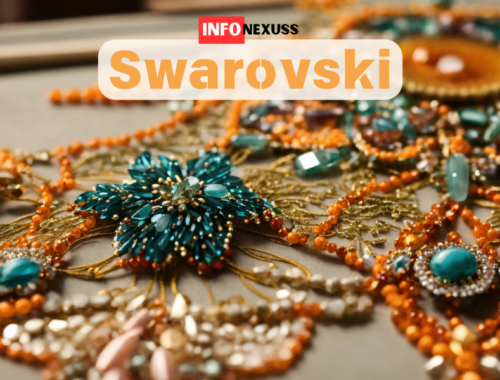
“Käöäntäjä” Guide: Find the Right Translator For You
The Indispensable Role of the “Käöäntäjä”
Have you ever felt the frustration of a message getting muddled as it crosses linguistic borders? Or perhaps you’ve struggled to navigate a foreign website, wishing you had a personal guide to decode the nuances? Enter the “käöäntäjä.” This Finnish word, rooted in the verb “kääntää” (to turn or translate), refers to the unsung heroes who bridge the gap between languages and cultures: the translators.
In our increasingly interconnected world, where businesses expand globally and individuals interact across continents, the role of the “käöäntäjä” has never been more critical. It’s not just about swapping words from one language to another; it’s about conveying meaning, intent, and even emotion with precision. A single mistranslation can lead to misunderstandings, lost opportunities, or even cultural faux pas. That’s why the demand for accurate, culturally sensitive translations is soaring.
In this comprehensive guide, we’ll delve into the multifaceted world of the “käöäntäjä.” We’ll explore how the profession is evolving in the digital age, the skills that set exceptional translators apart, and the tools they use to ensure accuracy and efficiency. You’ll learn how to identify the right “käöäntäjä” for your specific needs, whether you’re a business aiming to reach new markets or an individual seeking to connect with people from different cultures. We’ll also glimpse into the future of translation, where technology and human expertise intertwine to create a new landscape of possibilities.
By the end of this article, you’ll not only understand the significance of “käöäntäjä” but also have the knowledge to harness their skills to break down language barriers and unlock a world of communication and understanding. So, if you’re ready to go beyond simply “getting by” and embrace the power of effective translation, read on. The journey to linguistic fluency starts here.
Table of Contents
- 1 The Indispensable Role of the “Käöäntäjä”
- 2 The Translation Renaissance: A World United by Words
- 3 The Anatomy of an Exceptional “Käöäntäjä”
- 4 The “Käöäntäjä’s” Arsenal: Tools of the Translation Trade
- 5 Selecting Your Ideal “Käöäntäjä”: A Step-by-Step Guide
- 6 The “Käöäntäjä” of Tomorrow: Navigating the Shifting Landscape
- 7 Unlocking Global Understanding: The “Käöäntäjä” Advantage
The Translation Renaissance: A World United by Words
In our globalized era, where borders blur and communication transcends geographical boundaries, the importance of translation is undeniable. Businesses seeking to expand their reach need to communicate effectively with diverse audiences, while individuals yearn to connect with people from different cultures and backgrounds. This has led to a surge in demand for skilled “käöäntäjät” who can bridge the linguistic and cultural divides that separate us.
Advancements in technology, such as machine translation and AI-powered tools, have undoubtedly revolutionized the translation landscape. These tools offer speed and efficiency, making basic translation tasks more accessible than ever before. However, they still struggle with the nuances of language, particularly when it comes to cultural references, idioms, and humor. This is where the expertise of human “käöäntäjät” shines.
A seasoned “käöäntäjä” possesses not only linguistic proficiency but also a deep understanding of cultural context. They can navigate the subtleties of language, ensuring that the original message is not just translated but truly understood by the target audience. This is crucial in fields like marketing, where a poorly translated slogan can lead to embarrassment or even offense. For example, when KFC entered the Chinese market, their famous tagline “Finger-lickin’ good” was initially translated to “Eat your fingers off,” highlighting the importance of cultural sensitivity in translation.
The challenges of nuanced translation extend beyond just marketing. In legal documents, a single mistranslated term can have serious consequences. In technical manuals, a misunderstanding can lead to costly errors. In literature, the beauty and artistry of the original work must be preserved in translation. Only a skilled “käöäntäjä” can rise to these challenges, ensuring that the essence of the original message is faithfully conveyed across languages and cultures.
The demand for human “käöäntäjät” is not diminishing; it’s evolving. As technology continues to advance, the role of the translator is shifting towards one of collaboration. Machine translation tools can handle the heavy lifting of translating large volumes of text, while human “käöäntäjät” focus on refining the output, ensuring accuracy, and adding the human touch that machines simply cannot replicate.
The Anatomy of an Exceptional “Käöäntäjä”
A great “käöäntäjä” is more than just a bilingual wordsmith; they are a cultural ambassador, a linguistic artist, and a meticulous researcher all rolled into one. What sets them apart from the rest? Let’s delve into the key qualities that define an exceptional translator.
Linguistic Prowess:
The cornerstone of any skilled “käöäntäjä” is a mastery of both the source and target languages. This goes beyond basic vocabulary and grammar; it involves a deep understanding of idioms, colloquialisms, and the nuances that give each language its unique flavor. For instance, a Finnish “käöäntäjä” translating into English must grasp not only the literal meaning of Finnish words but also the cultural connotations and subtleties that might be lost in a direct translation.
Cultural Chameleon:
Language is deeply intertwined with culture. A proficient “käöäntäjä” is not just a linguistic expert but also a cultural chameleon, capable of adapting to the cultural context of both the source and target languages. They understand the unspoken rules, the humor, the references that might be lost on someone without a deep understanding of the culture. This cultural sensitivity ensures that the translated text resonates with the target audience on a deeper level.
Subject Matter Virtuoso:
While a general understanding of language is essential, many translation projects require specialized knowledge. Whether it’s legal contracts, medical reports, or technical manuals, a “käöäntäjä” specializing in a specific field can ensure accuracy and avoid costly misunderstandings. Their expertise goes beyond just understanding the terminology; it’s about grasping the underlying concepts and conveying them in a way that’s both precise and accessible.
Words That Work:
Effective communication is the heart of translation. A great “käöäntäjä” possesses impeccable writing skills in their target language. They can craft prose that is not just accurate but also engaging, persuasive, or informative, depending on the context. They can adapt their style to match the tone and purpose of the original text, whether it’s a formal business document or a creative marketing campaign.
Credentials and Community:
While natural talent and experience are invaluable, professional certifications and memberships in translation organizations add another layer of credibility to a “käöäntäjä.” These credentials demonstrate a commitment to ongoing learning, adherence to ethical standards, and a dedication to the craft of translation. They provide assurance to clients that the “käöäntäjä” they choose is not just capable but also recognized for their expertise.
Finding the right “käöäntäjä” is not just about ticking boxes on a checklist. It’s about finding a partner who understands your needs, your audience, and the nuances of your message. It’s about choosing someone who goes beyond mere translation to create a truly meaningful connection across languages and cultures.
The “Käöäntäjä’s” Arsenal: Tools of the Translation Trade
In the digital age, the modern “käöäntäjä” is armed with an impressive array of tools and resources designed to enhance their efficiency, accuracy, and overall productivity. Let’s explore the essential components of the translator’s toolbox.
Translation Memory Software (TMS):
At the heart of a professional translator’s workflow lies Translation Memory software. These sophisticated tools, like the industry-leading SDL Trados Studio, store previously translated segments of text, allowing “käöäntäjät” to reuse them in future projects. This not only saves time but also ensures consistency across translations. TMS can even suggest translations for new segments based on past work, significantly speeding up the process.
Terminology Management Tools:
Consistent terminology is crucial for accurate and professional translations, especially in specialized fields. Terminology management tools help “käöäntäjät” create and maintain glossaries of approved terms, ensuring that everyone involved in a project uses the same language. This is particularly important for large-scale projects where multiple translators might be working on different parts of the same document.
Dictionaries and Glossaries:
While TMS and terminology tools are essential for efficiency, traditional dictionaries and glossaries remain indispensable for any “käöäntäjä.” These resources, both online and offline, provide definitions, synonyms, and usage examples, helping translators find the perfect word for every context. Specialized dictionaries for technical, legal, or medical translations are also invaluable for subject matter experts.
Style Guides and Reference Materials:
Consistency in style and tone is essential for creating polished translations that resonate with the target audience. Style guides and reference materials provide guidance on grammar, punctuation, formatting, and preferred terminology. “Käöäntäjät” often consult these resources to ensure that their work adheres to industry standards and client preferences.
Collaboration Platforms:
For large-scale translation projects involving multiple “käöäntäjät,” collaboration platforms are essential. These tools allow translators to share work, track progress, and communicate with each other in real time. This fosters teamwork, ensures consistency, and helps meet tight deadlines.
Machine Translation (MT): A Helping Hand:
While machine translation tools like Google Translate have their limitations, they can be a valuable asset for human “käöäntäjät.” MT can be used to generate initial drafts of translations, which the “käöäntäjä” then refines and perfects. This can save time and effort, especially for large volumes of text. However, it’s important to remember that MT should be used as a tool, not a replacement for human expertise. The “käöäntäjä” remains the final arbiter of quality and accuracy.
By harnessing the power of these tools and resources, the modern “käöäntäjä” is well-equipped to navigate the complexities of language and culture, delivering high-quality translations that bridge communication gaps and foster global understanding.
Selecting Your Ideal “Käöäntäjä”: A Step-by-Step Guide
Finding the right “käöäntäjä” is akin to finding the perfect key for a complex lock – it requires careful consideration and a clear understanding of your needs. Here’s a roadmap to guide you through the selection process.
1. Define Your Project Scope and Budget:
Before embarking on your search, clearly define the scope of your translation project. How many words or pages need translation? What is the desired turnaround time? What is your budget? Having a clear understanding of these parameters will help you narrow down your options and avoid surprises later on.
2. Research Translation Agencies and Freelancers:
The internet is a treasure trove of potential “käöäntäjät.” Explore reputable translation agencies that specialize in your desired language pair and subject matter. Alternatively, consider freelance translators who might offer more personalized service. Professional directories, online platforms, and industry associations can be excellent resources for finding qualified candidates.
3. Request Quotes and Compare Services:
Once you’ve identified potential “käöäntäjät,” request detailed quotes that outline their rates, turnaround times, and any additional fees. Compare the services offered by different providers, considering factors such as their experience, specialization, and any value-added services they might offer, such as proofreading or editing.
4. Check References and Sample Translations:
Don’t hesitate to ask for references from previous clients. Speaking to others who have worked with a particular “käöäntäjä” can provide valuable insights into their work ethic, communication skills, and overall reliability. Additionally, request sample translations to assess their quality and style.
5. Communicate Clearly and Set Expectations:
Clear communication is the cornerstone of a successful collaboration with a “käöäntäjä.” Clearly articulate your expectations regarding deadlines, quality standards, and preferred style. Establish a communication channel that works for both parties, whether it’s email, phone calls, or video conferences. This ensures that everyone is on the same page and minimizes the risk of misunderstandings.
Remember: The cheapest option isn’t always the best. Investing in a skilled and experienced “käöäntäjä” is an investment in the quality and effectiveness of your communication. Take the time to find the right fit for your needs, and you’ll reap the rewards of accurate, culturally sensitive translations that resonate with your target audience.
Additional Tips:
- Consider asking for a test translation of a short sample text to gauge the translator’s skills before committing to a larger project.
- Look for “käöäntäjät” who are members of professional organizations like the American Translators Association (ATA) or the International Association of Professional Translators and Interpreters (IAPTI). This indicates a commitment to professional standards and ethics.
- If you have specific terminology or style preferences, provide the translator with a glossary or style guide to ensure consistency in the final product.
- Remember, trust your instincts. If you feel a good rapport with a particular “käöäntäjä” and they demonstrate a genuine interest in your project, it’s a good sign that you’ve found the right partner for your translation needs.
The “Käöäntäjä” of Tomorrow: Navigating the Shifting Landscape
The future of the “käöäntäjä” profession is a dynamic landscape, shaped by emerging trends and technological advancements. Let’s explore some of the key developments that are set to redefine the role of the translator.
AI: Friend or Foe?
Artificial intelligence (AI) has already made its mark on the translation industry, with machine translation tools becoming increasingly sophisticated. While this presents a challenge for “käöäntäjät” in terms of competition, it also opens up new opportunities. AI can handle large volumes of text quickly, freeing up human translators to focus on more complex tasks that require cultural understanding, nuance, and creativity. The “käöäntäjät” of the future will likely collaborate with AI, using it as a tool to enhance their productivity and accuracy.
The Rise of Specialization:
As the world becomes more interconnected, the demand for specialized translation services is growing. Fields like law, medicine, technology, and marketing require translators who possess not only linguistic expertise but also in-depth knowledge of the subject matter. Aspiring “käöäntäjät” would be wise to develop expertise in a specific niche, as this will make them more valuable and sought-after in the marketplace.
Remote Work and Localization: The New Normal:
The COVID-19 pandemic accelerated the shift towards remote work, and the translation industry was no exception. Many “käöäntäjät” now work from home, collaborating with clients and colleagues from around the world. This trend is likely to continue, opening up new opportunities for those who prefer flexible work arrangements. Additionally, the increasing demand for localization services, which involves adapting content to specific cultural and linguistic contexts, is creating new career paths for “käöäntäjät” with a deep understanding of diverse markets.
Preparing for the Future:
For aspiring “käöäntäjät,” the key to success lies in continuous learning and adaptability. Stay abreast of the latest technological advancements and embrace tools like machine translation as allies rather than threats. Invest in developing specialized knowledge in a particular field, and hone your cultural intelligence by immersing yourself in different languages and cultures. Networking with other professionals and joining translation organizations can provide valuable insights and opportunities.
The future of the “käöäntäjä” profession is bright for those who embrace change and are willing to adapt. By combining linguistic expertise with cultural awareness, subject matter knowledge, and technological savvy, the “käöäntäjät” of tomorrow will continue to play a vital role in bridging communication gaps and fostering global understanding.
Unlocking Global Understanding: The “Käöäntäjä” Advantage
In our increasingly interconnected world, where communication transcends borders and cultures, the “käöäntäjä” stands as a vital bridge builder. We’ve explored the evolving landscape of translation, the qualities that define a skilled “käöäntäjä,” and the tools they use to ensure accuracy and efficiency.
It’s clear that expert “käöäntäjät,” armed with their linguistic prowess, cultural sensitivity, and specialized knowledge, are indispensable in ensuring that your message is not just translated but truly understood. By investing in the right “käöäntäjä” for your needs, you’re not just hiring a translator; you’re gaining a partner who can unlock new markets, forge meaningful connections, and elevate your communication to a global level.
Are you ready to break down language barriers and reach a wider audience? Don’t let “lost in translation” be a phrase that defines your global endeavors. Empower your communication with the expertise of a skilled “käöäntäjä” and watch your message resonate across languages and cultures.
You May Also Like

Swarowskı: The Sparkling Legacy of Crystal Craftsmanship
July 6, 2024
Deciphering Colorful Variety of Lettuce NYT Crossword Clue
November 20, 2024

